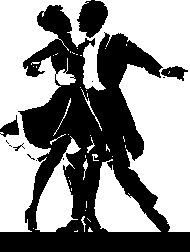 Time and Social Setting
Time and Social Setting
 Time and Social Setting
Time and Social Setting
|
These dances were popular in Italy between about 1450 (perhaps earlier) and probably 1494 or later. During this time period, Italy became the center of the European renaissance. There were great innovators in both the arts and sciences, moderate and relatively unopressive forms of government. This is despite the fact that Italy was fractured into a number of independent states at the time, all with their own forms of government, from empire to republic. The French and the English were tied up in wars between themselves. The reconquista was in full swing in Spain, and most other European nations, even Russia, were tied up in internal affairs, which left Italy relatively peaceful until the French invasion of Charles VIII in 1494.
The Italian Wars After 1494, until at least 1515, there were various wars in Italy which meant that too many people spent too much of their time shooting and stabbing at each other to do much in the way of dance. Certainly the artistic and scientific innovations were mostly achieved either side of this period. Italian culture didn’t settle down into peaceful growth again until the mid to late 16th Century. This had left a gulf of somwhat over 100 years between these dances and those of Caroso and Negri. During this time Italy, and Italian culture, had changed fairly significantly.
ROMAGNA MIA is one of the most popular songs in our region; the success of it lies in its semplicity and the combination of a nostalgic progression with a cheerful refrain. It has not been played for years yet everybody remember it even young kids because it is very catchy. It was composed by Secondo Casadei in the thirties and its original title was Casetta Mia (MY HOME). It was not immediately a hit but it became popular in the Seventies: recentlt many famous singers such as Gloria GAYNOR and Pavarotti have given a modern rendering of this song; it was also John Paul II Pope's favourite one. The first group to play it was Orchestra Italiana in the 70's.
The traditional dance wich accompanies this song is liscio. This dance is a mixture of valzer, mazurka and polka; in 1978. Orchestra Italiana created the Ca' del Liscio, the largest and most innovative "balera" ("liscio" dance hall) in Italy known in the Italian press as the "Temple of liscio", and the Nave del Sole, a mini-disco floating on the Adriatic sea with room for more than 240 people... Liscio is today called dance folk.
|